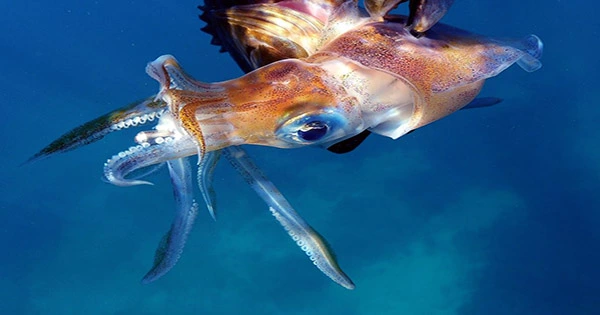The development of the vampyroteuthidae and their successors, octopuses, has been rewritten thanks to a 328 million-year-old fossil vampire squid with ten arms. Vampire squids don’t have a good reputation. For starters, the name isn’t appealing, and they remind some individuals of the facehugger from Alien. Few people were pleased when Goldman Sachs was portrayed as a “big vampire squid sucking money instead of blood.”
Despite this, palaeontologists believe that by calling the oldest known member of the Vampyropoda, Syllipsimopodi bideni, after US Vice President Joe Biden, they are attempting to honor rather than disrespect the president. At the very least, Biden might take solace in the discovery’s scientific significance.
Because vampyropods, which include octopods and vampire squid, lack bones and teeth, they do not fossilize effectively. The latest discovery, announced in Nature Communications, is the 82 million-year-oldest known specimen, extending the duration these organisms have inhabited the waters by a third. It’s also considerably better preserved than the previous oldest vampyropod, and it had a distinct evolutionary history from current vampire squids. In a statement, lead author Dr. Christopher Whalen of the American Museum of Natural History and Yale University noted, “This is the first and only known vampyropod with ten functioning appendages.”
Modern vampire squids have eight arms and two filaments, but some scientists have claimed that the filaments were arms with suckers attached at some point in their evolutionary history, which this discovery supports. “One of the distinguishing features distinguishing the 10-armed squid and cuttlefish line (Decabrachia) from the eight-armed Vampyropoda is the arm count. “We’ve known for a long time that octopuses get their eight arms by removing the two filaments of the vampire squid, and that these filaments are vestigial limbs,” Whalen explained.
“However, all previously recorded fossil vampyropods with appendages had just eight arms, hence this specimen is perhaps the first proof of the hypothesis that all cephalopods had 10 limbs ancestrally.” Why you’d give up something as helpful as two extra arms is a question best put to a vampire squid or octopus, but considering the latter’s enormous success, it’s evident they’ve gotten away with it.
In 1988, the Royal Ontario Museum received the specimen, which was unearthed in Montana’s Bear Gulch deposit. Bear Gulch was a shallow bay at the time, with fossils preserved astonishingly well by monsoon mud bursts, yet discovering a deeper water species like this was unexpected. It took decades for Whalen and collaborator Neil Landman to grasp its significance, as it did with many other things in museum collections.
A homage is frequently paid when a species is named after someone. For example, David Attenborough’s name appears on everything from flora to marsupial lions. However, there are certain exceptions. Given its description, which highlighted its blonde wig and petite genitals, Neopalpa donaldtrumpi was most likely not meant in the same way. Whalen, on the other hand, claims that he and Landman were honoring Vice President Joe Biden, who had just been inaugurated at the time the paper was submitted. He added, “I was heartened by President Biden’s promises to combat anthropogenic climate change, as well as his overall view that politicians should listen to scientists.”
The genus name, prehensile foot, refers to the fact that this is the earliest cephalopod with suckers, which the scientists believe were employed to remove shell animals akin to contemporary oysters. It’s possible that two longer arms would have been better for this. The scientists believe S. bideni lived more like current squids than its immediate progenitors, owing to its torpedo-shaped body and huge fins.












